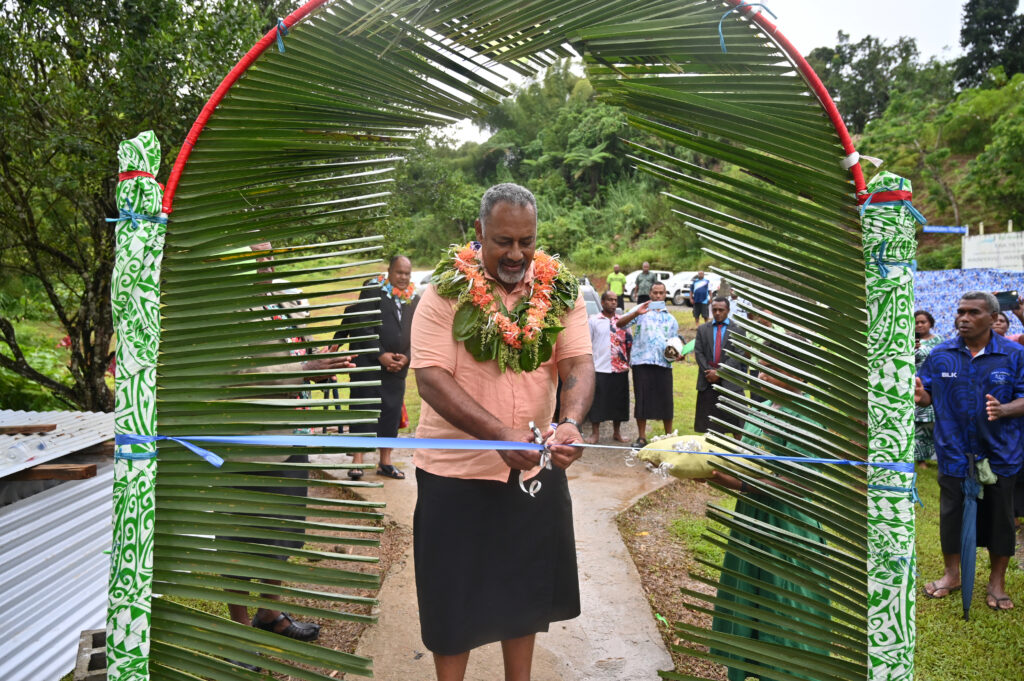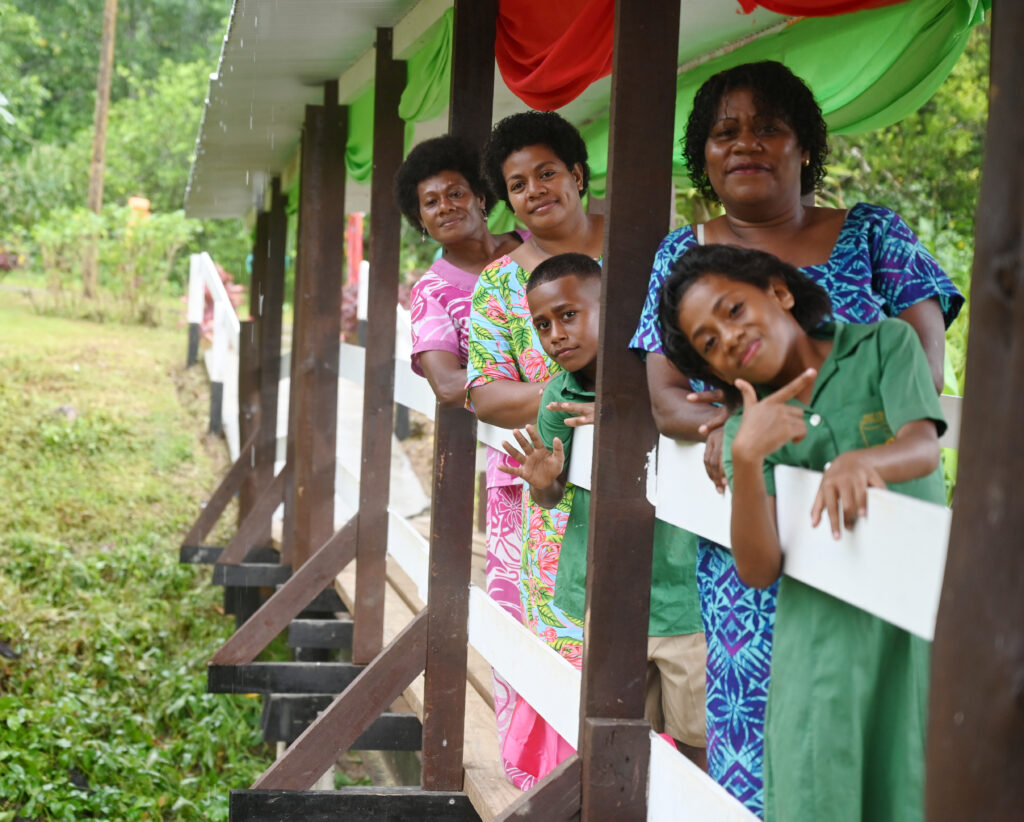
Caption: Minister for Rural and Maritime Development and Disaster Management Hon. Sakiasi Ditoka cuts a ribbon to officially commission the Wainilotulevu/Nasoqo Footpath Project in Namosi last week.
SUVA – More than $130,000 worth of investments by the Government was commissioned in the interior of Namosi last week, intended to enhance and improve the living standards of the villagers of Nasoqo and Wainilotulevu in the district of Veinuqa.
These include the Wainilotulevu Footpath, and Ecological Purification System (EPS) projects, the Nasoqo Footpath and Sanitation projects, and the Veinuqa Primary School Footcrossing Project.
The construction of the Wainilotulevu and Veinuqa Footpath project was completed under the Ministry of Rural and Maritime Development and Disaster Management’s Community Access Roads, Footpaths, and Footbridges (CARFF) Programme at a cost of more than $30,000. The project is intended to provide a safer means of access to and from the two villages, especially for the elderly, and school children, and also improve accessibility for villagers living with disability.
The Veinuqa Primary School Footcrossing Project was also completed under the Ministry’s CARFF Programme at a cost of more than $26,000. The project aims to provide a safer crossing for school children and teachers to and from school. It is also intended to improve accessibility for parents and people living with disability from two villages to the school during disaster periods as the school is their nearest designated evacuation center.
The Ministry had also worked with the United Nations Development Programme’s (UNDP) Governance for Resilience in the Pacific (Gov4Res) Project to fund the risk-informed development components of both projects. This included the installation of 12 solar streetlights along the footpath from Wainilotulevu to Nasoqo and the construction of a shelter along the foot-crossing that links both villages to the school. This is to provide lighting and shelter and ensure the safety and security of women, children, and members of vulnerable groups in both villages that use the two infrastructure to get to and from their homes and school.

Caption: Veinuqa Primary School teacher Ms. Maria Tanikorolevu with villagers of Wainilotulevu and Nasoqo at the newly opened foot-crossing that link the school to the two villages.
Ms. Maria Tanikorolevu has been teaching at the Veinuqa Primary School for the past nine years. Since then, she has been accessing her home and workplace by crossing a river.
“Before we had the foot-crossing, we witnessed a lot of difficulties, especially in terms of accessibility to and from the school for the teachers and students. At times when the water level in the river rises due to continuous heavy rain, children from both villages will not be able to attend school. But with the construction of this Footcrossing, we are very thankful to the Government. This has brought much relief to us. We will no longer have to wait for the water level to go down before students can return safely to their homes after school. We are very optimistic that this investment will greatly encourage our children to continue to pursue their education,” she said.
Nasoqo villager Ms. Roela Tunatewa said before the construction of the foot-crossing, students used to face a lot of hardships.
“Before the construction of this new foot-crossing, we would just tell our children not to go to school whenever it rained because we were always worried about their safety. For our children in kindergarten, we would have to lift them across to and from school daily because if they had to go alone, their clothes would be all wet by the time they reached school. But with this assistance from the Government, we are not only very happy, but we are also confident that this will encourage our children a lot to attend school daily,” Ms Tunatewa said.
Villagers from both villages have also expressed acknowledgment to the Government for improvement to their water source. The Wainilotulevu/Veinuqa EPS Project is intended to enable access to safe, quality, and clean drinking water for people from both villages.
Wainilotulevu Village headman Mr. Peceli Marua said villagers were grateful to the Government for their improved water source.
“Previously, we used to fetch water from a nearby creek that runs next to the village. Whenever there is heavy rain, the water is murky and we will not be able to consume it. During such times, there would be risks of contracting water-borne diseases due to the poor quality of untreated water. But with this EPS, we are very grateful to the Government, because even if it rains, we can still have access to clean drinking water,” Mr Marua said.
“We would like to also thank the Government for the provision of five sanitation facilities in Wainilotulevu and Nasoqo. Previously, we used pit toilets, but the provision of these new and improved sanitation facilities will contribute towards good hygiene and improvement of living standards for households in both villages.”
The provision of sanitation facilities was done through funding of close to $20,000 by the Ministry’s High-Risk Water and Sanitation Programme.
In commissioning the projects, Minister for Rural and Maritime Development and Disaster Management Hon. Sakiasi Ditoka stated that the projects would have lasting impacts on the community members, especially children who would now have the opportunity to attend school regularly, and the broader community, now having access to clean and safe drinking water.
“This initiative is an important move towards ensuring a healthy and sustainable environment for the communities,” Hon. Ditoka said.

Caption: The footpath and streetlights installed at Wainilotulevu Village in the district of Veinuqa in Namosi.





